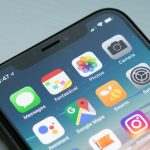So Apple did mistreat consumers after all… just not its newest customers
Let’s just say that iPhone 13 Pro owners who are into photography or videography must be pretty upset right now
KOSTAS FARKONAS
PublishED: September 11, 2022

So Apple’s event about its new iPhones has come and gone and we now know everything about their design, features and price. Pre-orders have started — with some issues — and most of these models are less than a week away from consumers’ hands. Days before the unveiling of the iPhone 14 lineup we published a piece about the likelihood of Apple keeping certain software features exclusive to the iPhone 14 Pro models by using the A16’s capabilities as an excuse (as the regular and Plus models are based on last year’s A15 chip instead). This was not outside the realm of possibility because the company has given people reason to believe it has done so in the past.
Now that we have official confirmation about every feature of every new iPhone, it’s clear that Apple did not do what many were concerned that it might. All the important features that are exclusive to the iPhone 14 Pro models — the Dynamic Island, the Always-On display, the 48-Megapixel ProRAW option — depend on specific hardware the regular and Plus models do not incorporate. In that sense, Apple did not mistreat consumers that plan to buy the iPhone 14 or the iPhone 14 Plus.
The company mistreated the owners of the iPhone 13 Pro and iPhone 13 Pro Max instead.

By taking a look at this page included on Apple’s own website — where the iPhone 14, the iPhone 14 Pro and the iPhone 13 Pro are compared — one can easily discern that two of the new features the company showed off during its presentation are missing from the iPhone 13 Pro list. It’s the Photonic Engine — Apple’s additional processing that is done “earlier in the imaging process” of photo capturing, working alongside Deep Fusion — and the Action Mode, a video recording option that stabilizes the moving image in pretty much the same way a gimbal would.
Now, if the Photonic Engine and the Action Mode were only offered by the iPhone 14 Pro models, it would still be vaguely suspect: the A15 and the A16 practically have no architectural differences to speak of and the latter is not that much more powerful so as to easily justify this exclusivity. But Apple would still be in the clear because, well, it would be very difficult to prove that these functions absolutely do not need the A16.
But the Photonic Engine and the Action Mode are both available to the regular iPhone 14 and the iPhone 14 Plus too, which are both built around the A15. This chip is not just architecturally similar to the A15 of the iPhone Pro 13 models, it’s the exact same chip: same performance cores, same efficiency cores, same Neural Engine cores, same speed, same manufacturing process, same everything. The iPhone 13 Pro models also offer 6GB of RAM, so it’s not as if Apple could claim that the Photonic Engine and the Action Mode work on the iPhone 14/14 Plus because of the upgrade they got compared to the regular iPhone 13’s 4GB of memory.

That’s exactly the kind of artificial exclusivity Apple has been accused of in the past. The company chooses to keep certain software features available just to its new iPhone models as a way to boost sales. There is absolutely no obvious reason why the iPhone 13 Pro/Pro Max owners should not have access to the Photonic Engine and the Action Mode other than Apple’s greed and questionable practices. It is as simple as that.
People using an iPhone 13 Pro/Pro Max spent quite a lot of money at some point during the last 12 months to purchase the best smartphone Apple had to offer and they deserve to be treated fairly. They have the right to receive the kind of support that they indirectly paid for: it’s common these days to think of Apple’s first-class, long-term software support as what consumers get in return for accepting the company’s high prices and fat margins. If Apple does not intend to honor that, then it’s time people knew about it so they would be able to make an informed decision next time around.



















